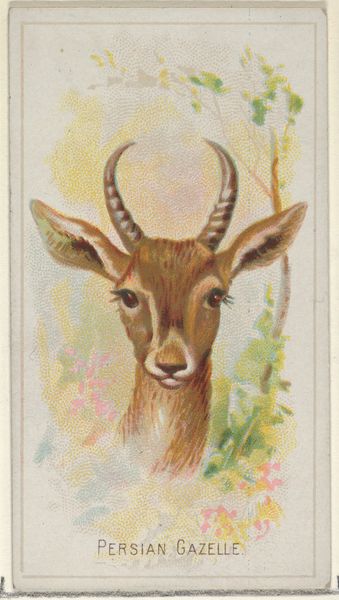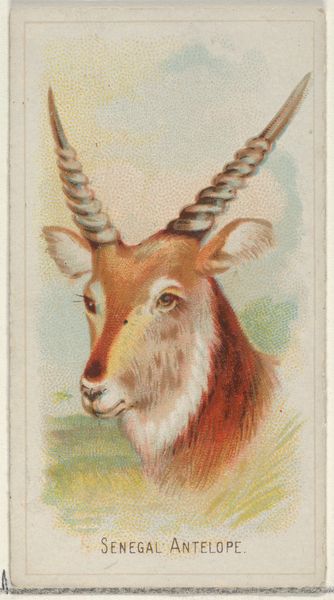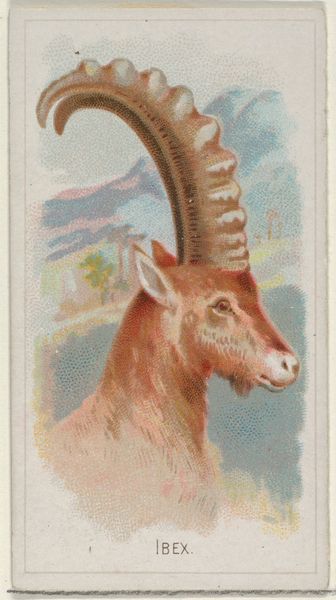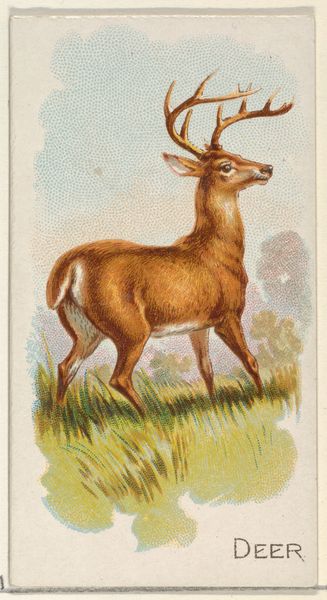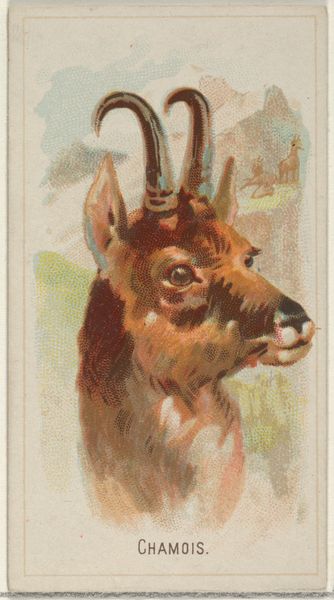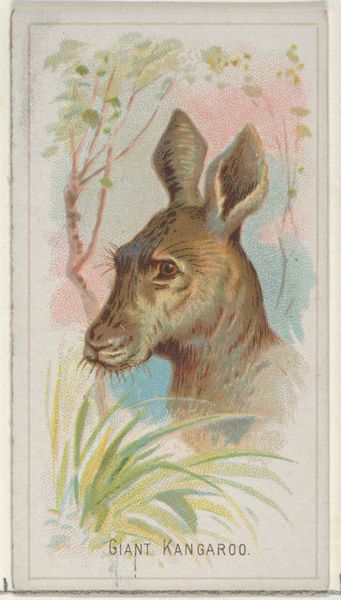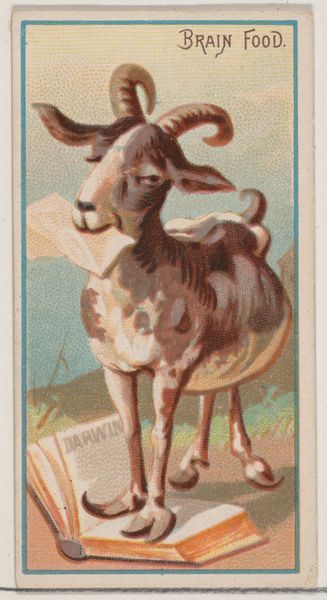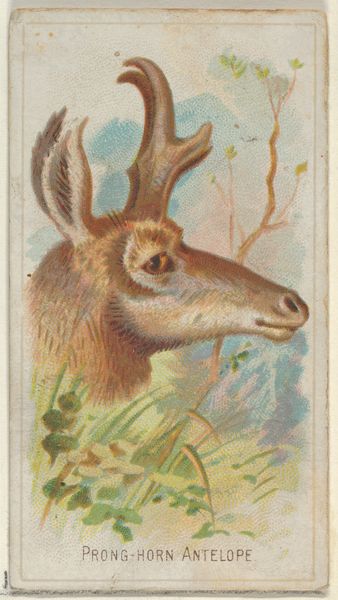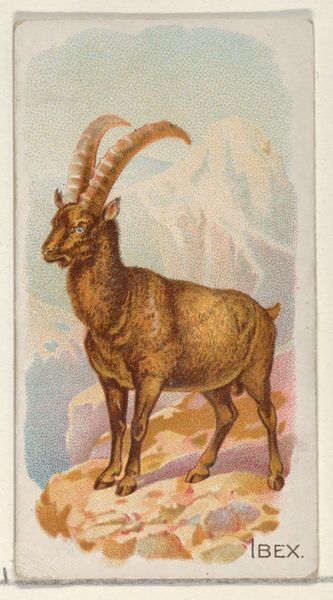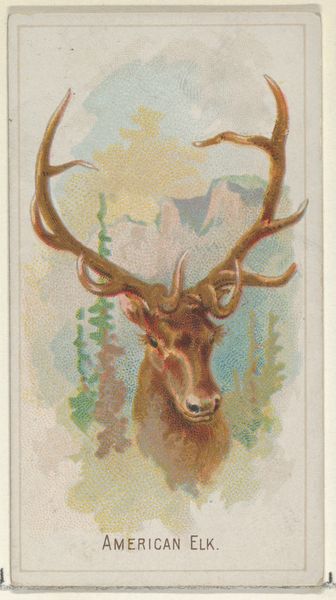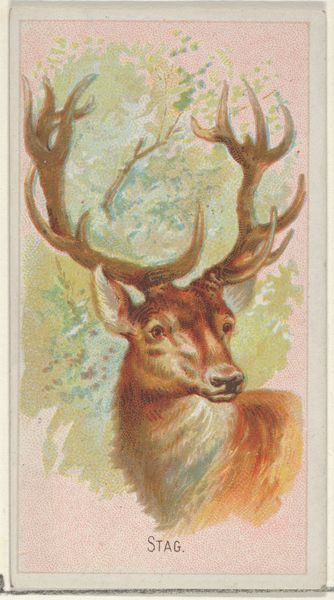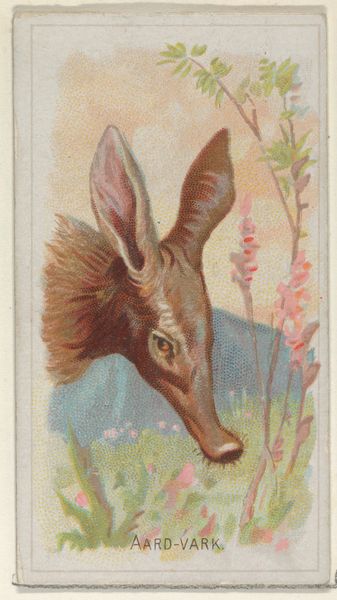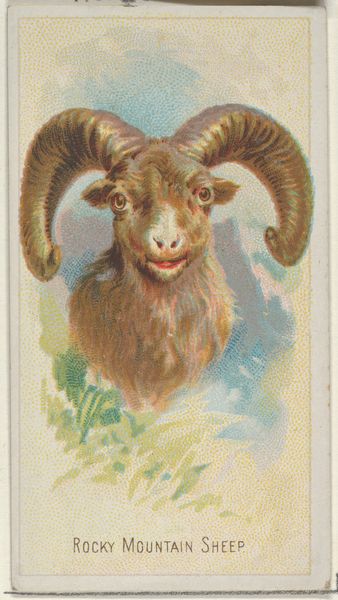
Eland, from the Wild Animals of the World series (N25) for Allen & Ginter Cigarettes 1888
0:00
0:00
drawing, coloured-pencil, print, paper, photography
#
portrait
#
drawing
#
still-life-photography
#
coloured-pencil
#
animal
# print
#
impressionism
#
landscape
#
paper
#
photography
#
coloured pencil
#
realism
Dimensions: Sheet: 2 3/4 x 1 1/2 in. (7 x 3.8 cm)
Copyright: Public Domain
Curator: Looking at this piece, "Eland, from the Wild Animals of the World series," printed around 1888 by Allen & Ginter, I’m immediately struck by the cultural context of these cigarette cards. They reflect an era of rampant colonialism and a desire to catalogue and, in a way, possess the ‘exotic.’ Editor: It's remarkable how much detail is achieved with coloured pencils on such a small scale. The composition, a close-up portrait, guides our focus to the animal's face, demanding a level of attention not typically granted to wildlife in art. The gaze holds a certain solemnity. Curator: Exactly! It’s also important to consider what was left out. Where is its habitat? Who benefits from its image being consumed in this way? These cards normalize a hierarchy, positioning the Western consumer as the beholder, implicitly endorsing imperial exploitation of natural resources and indigenous lands. Editor: I agree that the context is relevant, yet I am intrigued by the artist’s manipulation of form. The rendering of the fur, the twist of the horns—they possess a striking, almost sculptural quality. And consider the colour choices; the pastel background softens the impact, almost domesticating this wild animal. Curator: But domesticating the wild is precisely the problem! This seemingly innocent image is part of a larger system that diminishes the eland, stripping it of its agency and transforming it into a collectible commodity. These trading cards are about power dynamics disguised as harmless entertainment. Editor: Perhaps. Yet, by isolating the eland in this way, the artist also invites contemplation of its unique beauty. It’s an image of inherent elegance rendered with clear, focused artistry and detail. Curator: Yes, the artistic skill is undeniable, but the historical context is crucial here. It's a reminder that art can never be truly separated from the social and political realities that shaped its creation and reception. These images had a profound effect on public consciousness at the time, which continues to resonate. Editor: I suppose it demonstrates how even an outwardly simple drawing can reveal intricate connections and layers upon closer scrutiny. Curator: Exactly! It reminds us to consider whose perspectives and realities are being overlooked, and what values this kind of work normalizes and perpetuates.
Comments
No comments
Be the first to comment and join the conversation on the ultimate creative platform.
